ADA Space raises $55.6 million in Series B round
Monday, 29 November 2021 12:21
Chinese satellite operator and remote sensing data firm ADA Space raised $55.6 million in a Series B investment round for its artificially intelligent satellite network plans.
Blue Origin and Virgin Galactic select astronauts for future flights
Monday, 29 November 2021 11:36
Virgin Galactic has selected the winner of a contest to fly on a future SpaceShipTwo suborbital flight while Blue Origin prepares for its first New Shepard launch with a full six-person crew.
Galileo satellites given green light for launch
Monday, 29 November 2021 08:16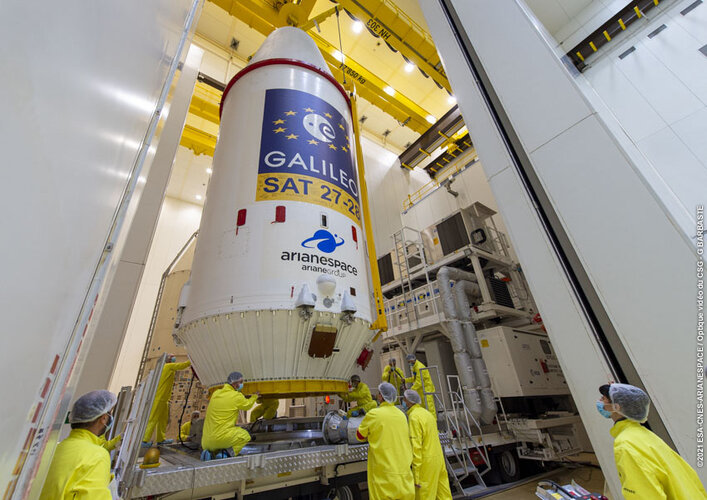
Europe’s next pair of Galileo satellites have been given a green light for launch. Last Friday’s Launch Readiness Review confirmed that the satellites, the supporting ground installations, and the early operations facilities and teams are ready for lift-off on the early hours of Thursday morning, European time.
Galileo: en route to full operational capability
Monday, 29 November 2021 08:00 Video:
00:05:36
Video:
00:05:36
Soon another pair of Galileo satellites will be launched on top of a Soyuz from Europe spaceport in French Guiana. These satellites are the first of the so-called 'Batch 3', comprising of 12 additional first-generation Galileo satellites commissioned in 2017 to bring the constellation to full operational capability. They will be used to further expand the constellation up to 38 satellites and act as backups and spares for satellites that reach their end-of-life.
This 11th Galileo launch also marks the 10 year anniversary of the first launch of the Galileo operational satellites and the start of the construction
Parker Solar Probe completes a record-setting swing by the sun
Friday, 26 November 2021 17:42
Blazing along at space-record speeds that would get it from Earth to the Moon in under an hour, NASA's Parker Solar Probe completed its 10th close approach to the sun on Nov. 21, coming within 5.3 million miles (8.5 million kilometers) of the solar surface.
The close approach (known as perihelion), also at a record distance, occurred at 4:25 a.m. EST (8:25 UTC), with Parker Solar Probe moving 364,660 miles per hour (586,864 kilometers per hour).
Testing confirms Webb Telescope on track for targeted Dec. 22 launch
Friday, 26 November 2021 17:15
Engineering teams have completed additional testing confirming NASA's James Webb Space Telescope is ready for flight, and launch preparations are resuming toward Webb's target launch date of Wednesday, Dec. 22, at 7:20 a.m. EST.
Additional testing was conducted this week to ensure the observatory's health following an incident that occurred when the release of a clamp band caused a vibration throughout the observatory.
On Wednesday, Nov. 24, engineering teams completed these tests, and a NASA-led anomaly review board concluded no observatory components were damaged in the incident. A "consent to fuel" review was held, and NASA gave approval to begin fueling the observatory. Fueling operations will begin Thursday, Nov. 25, and will take about 10 days.
The Webb Space Telescope is an international partnership with the European and Canadian space agencies. It will explore every phase of cosmic history—from within our solar system to the most distant observable galaxies in the early universe, and everything in between. Webb will reveal new and unexpected discoveries, and help humanity understand the origins of the universe and our place in it.
New Russian module docks with International Space Station
Friday, 26 November 2021 17:07
Russian node module docks with ISS
Friday, 26 November 2021 15:56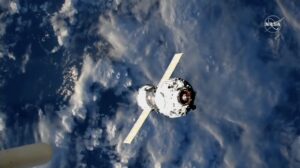
A node module billed as the final Russian element of the International Space Station docked with the station Nov. 26.
Could we really deflect an asteroid heading for Earth? An expert explains NASA's latest DART mission
Friday, 26 November 2021 15:10
A NASA spacecraft the size of a golf cart has been directed to smash into an asteroid, with the intention of knocking it slightly off course. The test aims to demonstrate our technological readiness in case an actual asteroid threat is detected in the future.
The Double Asteroid Redirection Test (DART) lifted off aboard a SpaceX rocket from California on November 23, and will arrive at the target asteroid system in September, next year.
The mission will travel to the asteroid Didymos, a member of the Amor group of asteroids.
Chinese space firms present big ambitions at commercial space forum
Friday, 26 November 2021 11:36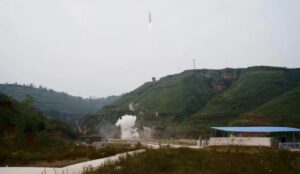
Players in China’s emerging commercial space sector have outlined big plans for rockets, spaceplanes and more for the coming years at a space forum hosted in Wuhan, central China.
ESA helps Greece to boost its space investments
Friday, 26 November 2021 11:28
Ambitious plans to expand the nascent space industry in Greece – enabling the digital transformation of society while creating jobs and generating prosperity – have received a fillip from ESA.
Earth from Space: Kainji Lake
Friday, 26 November 2021 08:00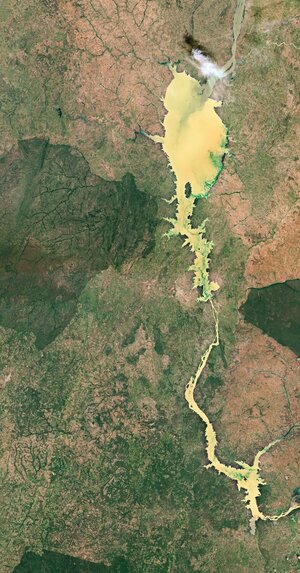
Kainji Lake, a reservoir on the Niger River in western Nigeria, is featured in this true-colour image captured by the Copernicus Sentinel-2 mission.
Galileos attached to upper stage as launch draws near
Thursday, 25 November 2021 15:24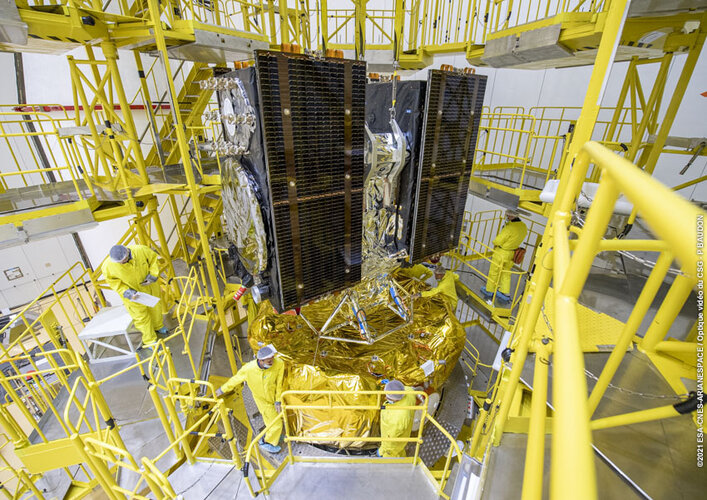 Image:
Galileos attached to upper stage as launch draws near
Image:
Galileos attached to upper stage as launch draws near JWST undamaged from payload processing incident
Thursday, 25 November 2021 15:11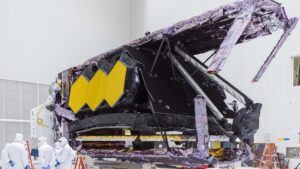
Launch preparations for NASA’s James Webb Space Telescope will resume after testing found no damage to the spacecraft from a payload processing incident earlier this month.
Galileo satellites in place for launch
Thursday, 25 November 2021 15:08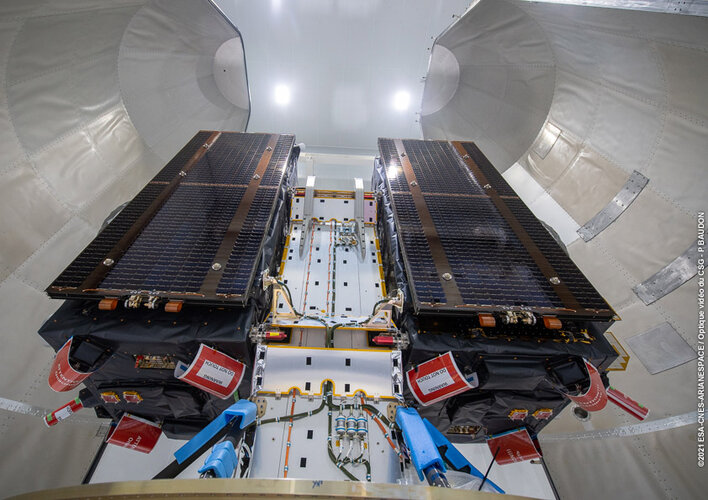
Europe’s next two Galileo satellites have been attached to the dispenser on which they will ride to orbit, and the launcher fairing that will protect them during the first part of the ascent to orbit has been closed around the pair.

